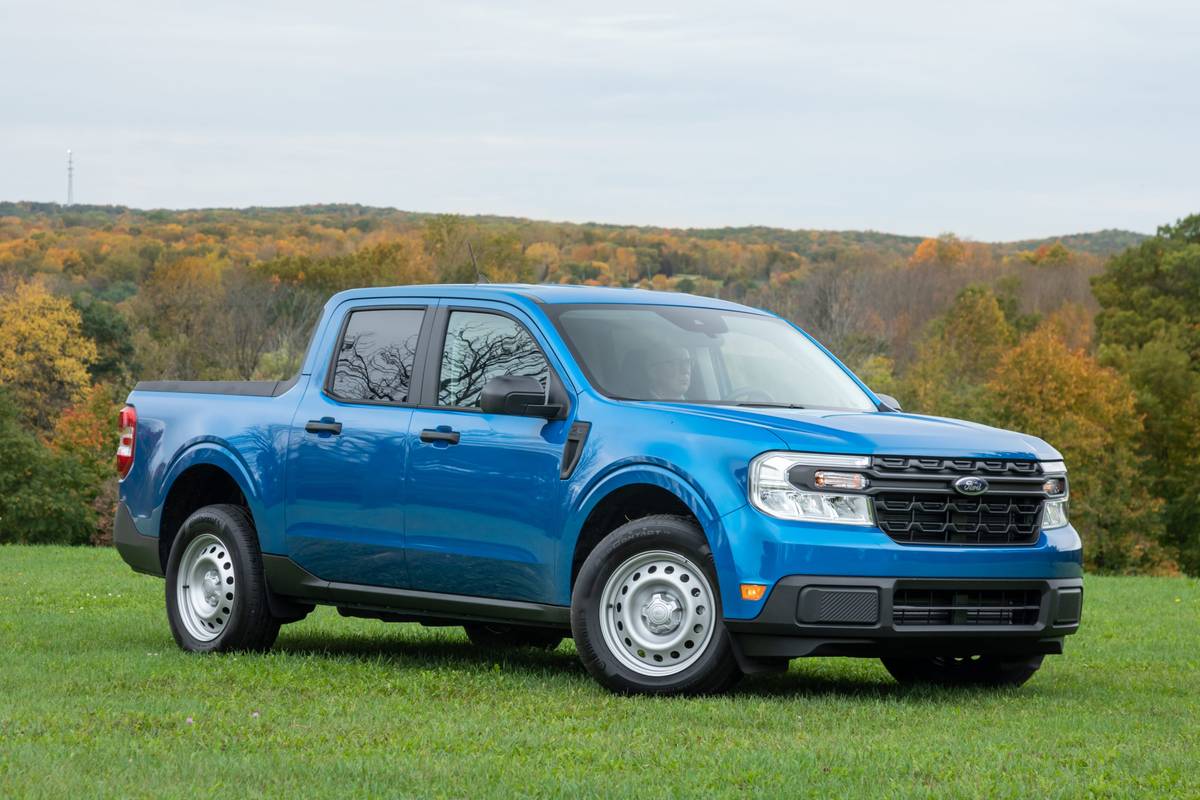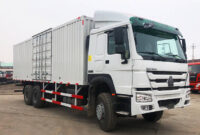Cheap Trucks For Sale Under $5000: Your Ultimate Guide to Affordable Utility pickup.truckstrend.com
In a world where new truck prices routinely soar past $40,000, the idea of finding a reliable pickup for under $5,000 might seem like a pipe dream. However, for many individuals and businesses, a budget-friendly truck isn’t just a fantasy – it’s a practical necessity. Whether you need a workhorse for hauling lumber, a reliable vehicle for weekend adventures, a first truck for a new driver, or simply a secondary vehicle for dirty jobs, the sub-$5,000 market offers a surprising array of options. This comprehensive guide will navigate the landscape of cheap trucks for sale under $5,000, helping you understand what to look for, where to find it, and how to make a smart, informed purchase that won’t break the bank.
The Allure of the Under-$5,000 Truck
Cheap Trucks For Sale Under $5000: Your Ultimate Guide to Affordable Utility
Why would anyone deliberately seek out a truck priced so low? The reasons are numerous and compelling:
- Unbeatable Affordability: This is the primary driver. For those on a tight budget, or who simply don’t want a significant car payment, a sub-$5,000 truck offers utility at an accessible price point.
- Utility Without the Guilt: Need to haul gravel, lumber, or dirty equipment? An older, cheaper truck is perfect for these tasks. You won’t cringe at every scratch or dent like you might with a brand-new vehicle.
- Project Vehicle Potential: Many budget trucks become platforms for customization, off-roading builds, or restoration projects. Their simpler mechanics often make them easier to work on for the DIY enthusiast.
- Low Depreciation: A vehicle already at the bottom of its depreciation curve will lose very little value, making it a sound financial choice if maintained well.
- Secondary Vehicle: It can serve as a reliable backup, a dedicated work truck, or a dedicated tow rig without tying up significant capital.
- Learning Opportunity: For new drivers or those looking to learn basic auto maintenance, an older, less complex truck can be an excellent classroom.

What to Expect When Buying Under $5,000
It’s crucial to set realistic expectations when shopping in this price bracket. You won’t find a low-mileage, pristine, late-model truck. Instead, prepare for:
- Higher Mileage: Most trucks under $5,000 will have well over 150,000 miles, and often closer to 200,000 or even 250,000 miles. High mileage isn’t necessarily a deal-breaker if the vehicle has been well-maintained.
- Cosmetic Imperfections: Dings, dents, scratches, faded paint, interior wear and tear, and some rust are almost guaranteed. These are typically superficial and don’t affect the truck’s functionality.
- Minor Mechanical Issues: Be prepared for potential minor leaks, worn suspension components, or small electrical quirks. Factor in a "repair budget" post-purchase.
- Basic Features: Don’t expect modern infotainment systems, advanced safety features, or luxurious interiors. These trucks are typically more utilitarian.
- Age: You’ll primarily be looking at trucks from the late 1990s through the mid-2000s, possibly early 2010s for compact models.


Top Contenders: Best Truck Models Under $5,000
While condition varies wildly, certain models consistently prove to be reliable workhorses that can be found in the sub-$5,000 range. Focus on these for your search:
- Ford Ranger (3rd Generation, 1998-2012): A perennial favorite. Known for its compact size, decent fuel economy (especially with the 4-cylinder), and legendary reliability. The 4.0L V6 offers more power. Parts are abundant and cheap. Look out for frame rust in saltier climates and potential automatic transmission issues on higher mileage units.
- Chevrolet S-10 / GMC Sonoma (2nd Generation, 1994-2004): Another solid compact option. The 4.3L V6 engine is particularly robust and widely praised. Simple mechanics make them easy to repair. Common issues include fuel pump failures, intake manifold gasket leaks, and rust in cab corners/rocker panels.
- Toyota Tacoma (1st Generation, 1995-2004): The holy grail of compact trucks, but finding one under $5,000 that isn’t a rust bucket or totally clapped out is challenging. Their legendary reliability makes them highly sought after. Crucially, inspect the frame for rust – Toyota had a major recall for frame rot. If you find a solid one, it’s a gem.
- Nissan Frontier (1st Generation, 1998-2004): Often overlooked, the first-gen Frontier offers good value. They are generally robust and capable, especially the V6 models. Check for rust, especially on the frame and bed, and timing chain issues on the V6.
- Dodge Dakota (2nd Generation, 1997-2004): A mid-size option, larger than the compacts but smaller than full-size trucks. Available with a V8 engine, offering more towing and hauling capability than its smaller brethren. Common issues include rust, transmission problems, and various electrical gremlins.
- Ford F-150 (10th/11th Generations, 1997-2008): While older full-size trucks can be found under $5,000, they will likely have very high mileage. The 4.6L V8 is generally more reliable than the 5.4L (which had spark plug ejection issues). Great for heavy-duty work and spacious cabins. Be vigilant about rust, especially in the bed and wheel wells.
- Chevrolet Silverado 1500 / GMC Sierra 1500 (GMT800 Platform, 1999-2007): These trucks are renowned for their durable powertrains (the 5.3L V8 is a workhorse) and comfortable ride. Like the F-150, expect high mileage. Common problems include rust on cab corners and rocker panels, fuel pump failures, and clear coat fade.
Where to Find Your Bargain Truck
Finding a good deal requires patience and knowing where to look:
- Private Sellers (Online Marketplaces):
- Facebook Marketplace: Currently one of the best places. Filter by price, location, and model. Many sellers include detailed descriptions and photos.
- Craigslist: Still a viable option, though be wary of scams. Local listings are often the best.
- Local Classifieds/Newspapers: Less common, but sometimes older generations prefer this method.
- Small Independent Dealerships: These lots often specialize in older, higher-mileage vehicles. Prices might be slightly higher than private sales, but they may offer some basic reconditioning. Be sure to scrutinize their inventory.
- Auctions:
- Public Auctions: Often sell seized vehicles or those from government fleets. You can find incredible deals, but vehicles are sold "as-is," and you typically can’t test drive them. Research auction houses in your area.
- Government Surplus Auctions: Agencies like the GSA (General Services Administration) sell off old fleet vehicles. These are often well-maintained but typically have high mileage.
- Word of Mouth: Let friends, family, and co-workers know you’re in the market. Someone might know an elderly relative selling their rarely used truck, or a local business upgrading their fleet.
The Essential Pre-Purchase Checklist
Buying a cheap truck isn’t just about finding one; it’s about finding a good one. Follow these steps meticulously:
- Define Your Needs and Budget: What will you use the truck for? How much can you truly afford, not just for the purchase, but for immediate repairs, insurance, and registration?
- Research Common Issues: For any specific model you’re considering, search online forums and consumer reports for common problems. This will tell you what to pay extra attention to during inspection.
- Thorough Visual Inspection (Exterior & Interior):
- Rust: This is paramount. Check the frame rails (especially near the wheels and under the doors), rocker panels, cab corners, bed mounts, and suspension components. Surface rust is manageable; structural rust is a deal-breaker.
- Fluids: Look under the truck for leaks (oil, coolant, transmission fluid, power steering fluid). Check fluid levels and color (e.g., clear reddish transmission fluid is good; dark, burnt-smelling fluid is bad).
- Tires: Check tread depth and even wear. Uneven wear can indicate alignment or suspension issues.
- Lights & Electrical: Test all lights, turn signals, wipers, horn, radio, A/C, and power windows/locks.
- Body Panels: Look for mismatched paint, uneven gaps, or crumpled sections, which could indicate prior accident damage.
- Interior: Check seats, carpet, dashboard, and headliner for excessive wear, tears, or water damage.
- The Test Drive:
- Cold Start: Listen for strange noises (knocking, ticking, grinding). Check for excessive smoke from the exhaust.
- Engine & Transmission: Listen for smooth shifting (no clunks or jerks). Accelerate firmly to check for power loss or hesitation.
- Brakes: Test at various speeds. No pulling, grinding, or spongy pedal.
- Steering & Suspension: Drive over bumps and listen for clunks or rattles. Check for excessive play in the steering wheel.
- 4×4 (if applicable): Engage 4-wheel drive and drive a short distance (on a loose surface if possible) to ensure it engages and disengages properly.
- Vehicle History Report (VHR): Invest in a CarFax or AutoCheck report. This can reveal accident history, salvage titles, flood damage, odometer rollbacks, and maintenance records. It’s a small investment that can save you thousands.
- Professional Pre-Purchase Inspection (PPI): This is arguably the most important step. For $100-$200, a trusted independent mechanic will put the truck on a lift and thoroughly inspect it, identifying issues you might miss. They can give you an honest assessment of its condition and potential repair costs. If the seller refuses a PPI, walk away.
- Negotiation: Armed with your inspection findings and VHR, you’ll be in a strong position to negotiate the price. Point out any discovered flaws to justify a lower offer.
Common Challenges and Solutions
Even with careful inspection, older trucks present unique challenges:
- Rust: The biggest enemy. If it’s structural (frame, suspension mounting points), it’s often not worth the repair. Surface rust on the body can be addressed with sanding and paint.
- Solution: Prioritize a truck with minimal frame rust. If minor, consider rust-proofing treatments.
- High Mileage: Means more wear and tear on components.
- Solution: Focus on maintenance records. A truck with 200k miles and meticulous service history is often better than one with 120k miles and no records.
- Worn Suspension/Steering Components: Ball joints, tie rods, shocks, and bushings wear out.
- Solution: Factor these replacements into your budget. Many are DIY-friendly or relatively inexpensive for a mechanic.
- Electrical Gremlins: Older wiring can lead to intermittent issues.
- Solution: A good PPI should identify major electrical issues. For minor quirks, online forums are invaluable for troubleshooting.
- Lack of Modern Features: No Bluetooth, backup camera, or advanced safety tech.
- Solution: Aftermarket head units can add Bluetooth/Apple CarPlay/Android Auto. Rearview cameras are relatively inexpensive to install.
Maintaining Your Budget Truck
Once you’ve purchased your under-$5,000 truck, ongoing maintenance is key to its longevity:
- Regular Fluid Changes: Oil, transmission fluid, differential fluid, coolant, brake fluid. Follow the manufacturer’s recommended intervals or even shorten them for older vehicles.
- Tire Care: Rotate tires regularly, maintain proper pressure, and replace them when worn.
- Brake System Checks: Inspect pads, rotors, and fluid levels regularly.
- Address Issues Promptly: Don’t let a small leak or strange noise turn into a catastrophic failure. Fix minor problems as soon as they arise.
- DIY vs. Professional: Learn basic maintenance tasks (oil changes, filter replacements, fluid checks) to save money. For more complex repairs, find a trustworthy, independent mechanic who specializes in older vehicles.
- Cleanliness: Keeping the truck clean, inside and out, can prevent rust and prolong the life of interior components.
Price Table: Common Cheap Truck Models (Under $5,000)
Disclaimer: Prices for used vehicles, especially in this budget range, fluctuate significantly based on condition, mileage, region, demand, and seller motivation. This table provides a general guide to models commonly found under $5,000 and typical considerations.
| Model (Common Generations) | Typical Price Range (Under $5k) | Key Strengths | Common Issues to Check | Ideal Use Case |
|---|---|---|---|---|
| Ford Ranger (3rd Gen: ’98-’12) | $2,500 – $4,800 | Reliable, fuel-efficient (4-cyl), compact, simple | Frame rust, transmission (auto), ball joints, timing chain (4.0L) | Light hauling, daily driver, first truck, project vehicle |
| Chevy S-10 / GMC Sonoma (2nd Gen: ’94-’04) | $2,000 – $4,500 | Robust 4.3L V6, simple mechanics, good parts availability | Fuel pump, intake manifold gasket, rust (cab corners/rockers) | DIY projects, light-duty work, secondary vehicle |
| Toyota Tacoma (1st Gen: ’95-’04) | $3,500 – $5,000 (often higher) | Legendary reliability, strong resale (even at this price) | CRITICAL FRAME RUST, lower ball joints, age-related wear | Daily driver (if solid), light off-roading, long-term keeper |
| Nissan Frontier (1st Gen: ’98-’04) | $2,500 – $4,700 | Good value, capable 4×4, comfortable ride | Rust (frame/bed), timing chain (V6), fuel gauge issues | Utility, light towing, adventurous weekend trips |
| Dodge Dakota (2nd Gen: ’97-’04) | $2,000 – $4,000 | Mid-size capability, optional V8, good towing for its class | Rust, transmission, electrical issues, steering components | Heavier hauling than compacts, work truck |
| Ford F-150 (10th/11th Gen: ’97-’08) | $3,000 – $5,000 (higher mileage) | Full-size capability, readily available parts, spacious | Spark plug issues (5.4L), rust (bed/wheel wells), suspension wear | Heavy hauling, work truck, general utility |
| Chevy Silverado/Sierra 1500 (GMT800: ’99-’07) | $3,000 – $5,000 (higher mileage) | Durable powertrains (5.3L V8), comfortable, widespread parts | Rust (cab corners/rockers), fuel pump, brake lines, clear coat fade | Work truck, daily driver, towing |
Frequently Asked Questions (FAQ)
Q1: Is it truly worth buying a truck for under $5,000?
A1: Absolutely, if you approach the purchase wisely. For specific needs like hauling, a secondary vehicle, or a project, it offers immense utility at minimal cost. The key is realistic expectations and thorough inspection.
Q2: What’s considered "good mileage" for a truck under $5,000?
A2: "Good" is relative. Most trucks in this range will have 150,000 to 250,000+ miles. Don’t focus solely on mileage; a truck with 200,000 miles and excellent maintenance records is often a better buy than one with 120,000 miles and no history. Condition and maintenance are more important than just the number on the odometer.
Q3: Should I always get a professional pre-purchase inspection (PPI)?
A3: Yes, unequivocally. A PPI is the best money you’ll spend. It can uncover hidden issues that could cost thousands to repair, saving you from a costly mistake.
Q4: What are the most common problems with older trucks in this price range?
A4: Rust (especially on the frame), worn suspension components (ball joints, shocks), fluid leaks (oil, transmission, power steering), and age-related electrical issues. Engine and transmission problems are also possible, which is why a thorough test drive and PPI are critical.
Q5: Can I get financing for a truck under $5,000?
A5: It’s highly unlikely. Most lenders do not offer loans for vehicles under a certain value (often $7,500-$10,000) or for vehicles over a certain age/mileage. These purchases are almost always cash-only.
Q6: Are parts readily available for these older models?
A6: Generally, yes. The models listed (Ranger, S-10, F-150, Silverado, Tacoma, Frontier, Dakota) were produced in large numbers, so aftermarket and salvage parts are widely available and often inexpensive.
Q7: What’s the best way to avoid buying a lemon?
A7: Research common issues for the model, thoroughly inspect the truck yourself (especially for rust), conduct a comprehensive test drive, pull a vehicle history report, and always get a professional pre-purchase inspection. Don’t rush the decision.
Conclusion
Finding a cheap truck for sale under $5,000 is not just possible; it’s a smart strategy for countless individuals seeking utility without the financial burden of a new vehicle. While it demands a careful approach, realistic expectations, and diligent inspection, the rewards are significant: a capable, affordable workhorse that can tackle tough jobs, facilitate hobbies, or simply serve as reliable transportation. By understanding the market, knowing where to look, and following a comprehensive pre-purchase checklist, you can drive away with a true bargain and enjoy the many benefits of truck ownership without breaking the bank. Your next great adventure, or your most demanding chore, could be just a $5,000 truck away.



